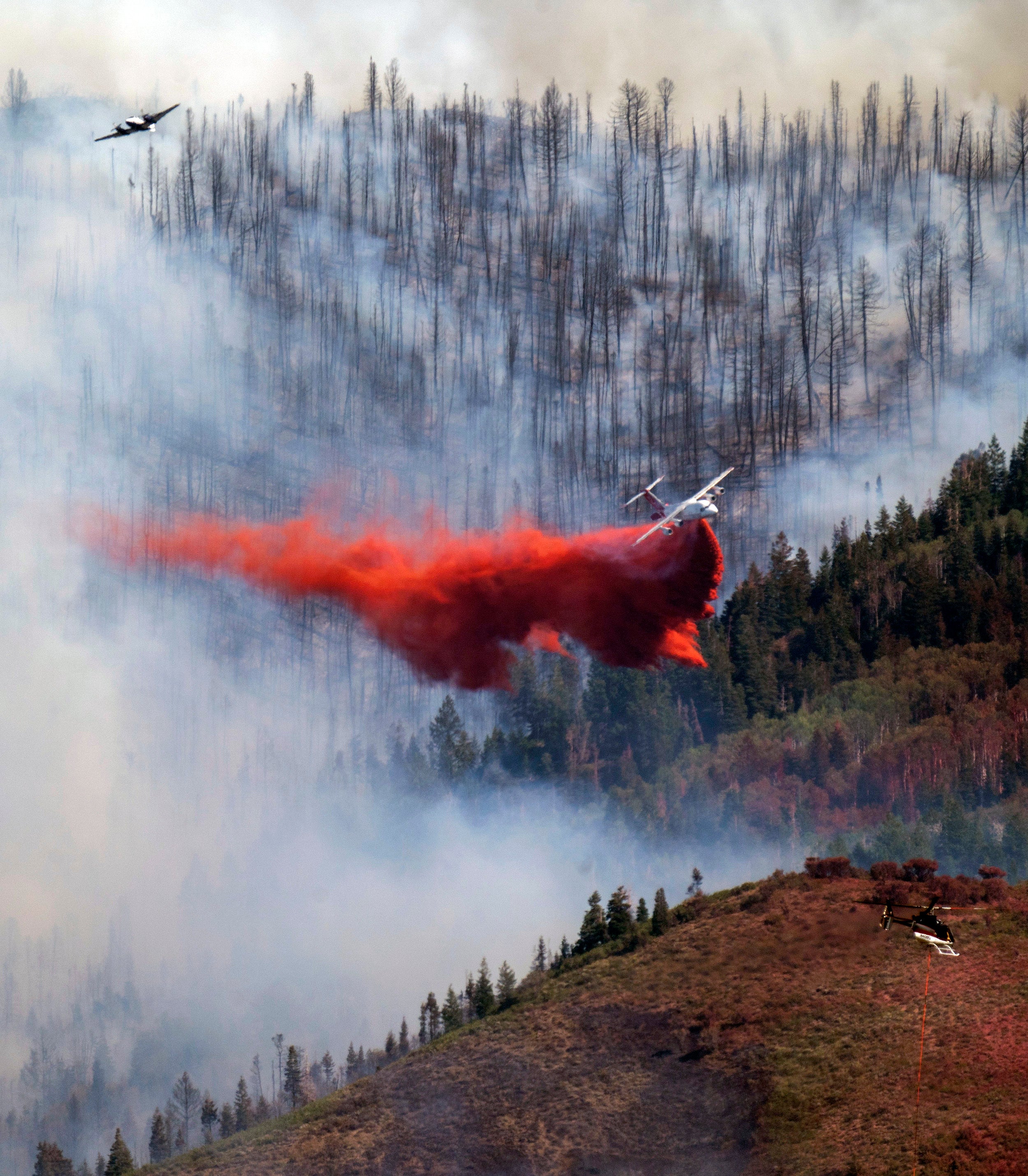Thunderstorms, heat fuel wildfires burning across West
The danger of new fires erupting across the West because of unstable weather conditions added to the burden already faced by overstretched crews battling blazes across the region

Your support helps us to tell the story
From reproductive rights to climate change to Big Tech, The Independent is on the ground when the story is developing. Whether it's investigating the financials of Elon Musk's pro-Trump PAC or producing our latest documentary, 'The A Word', which shines a light on the American women fighting for reproductive rights, we know how important it is to parse out the facts from the messaging.
At such a critical moment in US history, we need reporters on the ground. Your donation allows us to keep sending journalists to speak to both sides of the story.
The Independent is trusted by Americans across the entire political spectrum. And unlike many other quality news outlets, we choose not to lock Americans out of our reporting and analysis with paywalls. We believe quality journalism should be available to everyone, paid for by those who can afford it.
Your support makes all the difference.The danger of new fires erupting across the West because of unstable weather conditions added to the burden already faced by overstretched crews battling blazes across the region.
Thunderstorms pushed flames in Northern California on Saturday closer to two towns not far from where the Dixie Fire last week destroyed much of the small town of Greenville a gold rush-era community.
The thunderstorms, which began Friday, didn’t produce much rain but whipped up wind and created lightning strikes, forcing crews to focus on using bulldozers to build lines and keep the blaze from reaching Westwood, a town of about 1,700 people. Westwood was placed under evacuation orders Aug. 5.
Wind gusts of up to 50 mph (80 kph) also pushed the fire closer to Janesville a town of about 1,500 people, east of Greenville, said Jake Cagle, the operations chief at the east zone of the fire.
“Very tough day in there yesterday in the afternoon and the night (crew) picked up the pieces and tried to secure the edge the best they could with the resources they had,” he said in a briefing Saturday.
The fire was among more than 100 large wildfires burning in more than a dozen states in the West, a region seared by drought and hot, bone-dry weather that turned forests, brushlands, meadows and pastures into tinder.
The U.S. Forest Service said Friday it is operating in crisis mode, fully deploying firefighters and maxing out its support system.
The roughly 21,000 federal firefighters working on the ground is more than double the number of firefighters sent to contain forest fires at this time a year ago, said Anthony Scardina, a deputy forester for the agency’s Pacific Southwest region.
More than 6,000 firefighters alone were battling the Dixie Fire, which has ravaged nearly 845 square miles (2,100 square kilometers) — an area the size of Tokyo — and was 31% contained.
“The size is unimaginable, its duration and its impact on these people, all of us, including me, is unbelievable,” said Johnnie Brookwood, who was staying in her third evacuation center.
Brookwood had never heard of a road named Dixie when the wildfire began a month ago in the forestlands of Northern California.
Within three weeks, it exploded into the largest wildfire burning in the U.S., destroying more than 1,000 homes and businesses including a lodge in Greenville where she was renting a room for $650 per month.
“At first (the fire) didn’t affect us at all, it was off in some place called Dixie, I didn’t even know what it means,” Brookwood, 76, said Saturday. “Then it was ‘Oh no we have to go too?’ Surely Greenville won’t burn. But then it did — and now all we can see are ashes.”
The cause of the fire has not been determined. Pacific Gas and Electric has said the fire may have been started when a tree fell on its power line.
A fast-moving fire broke out Saturday afternoon east of Salt Lake City, shutting down Interstate 80 and prompting the evacuation of Summit Park, a mountain community of 6,600 people. Fire officials said the blaze was burning about 3 square miles (8 square kilometers) and threatening thousands of homes and power lines.
In southeastern Montana firefighters were gaining ground on a pair of fires that chewed through vast rangelands and at one point threatened the Northern Cheyenne Indian Reservation.
The fires were caused by heat from coal seams, the deposits of coal found in the ground in the area, said Peggy Miller, a spokeswoman for the fires.
Mandatory evacuation for the tribal headquarters town of Lame Deer remained in place because of poor air quality, she added.
Smoke also drove air pollution levels to unhealthy or very unhealthy levels in parts of Northern California, Oregon and Idaho.
In southeastern Oregon, two wildfires started by lightning Thursday near the California border spread rapidly through juniper trees, sagebrush and evergreen trees.
The Patton Meadow Fire about 14 miles (23 kilometers) west of Lakeview, near the California border, exploded to 11 square miles (28 square kilometers) in less than 24 hours in a landscape sucked dry by extreme drought. It was 10% contained.
Hot weather and bone-dry conditions in Oregon could increase fire risks through the weekend.
___
Nguyen reported from Oakland, California. Matthew Brown in Billings, Montana, Olga R. Rodriguez in San Francisco and Sara Cline in Portland, Oregon, contributed to this report.